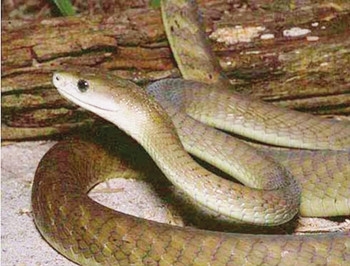
The cold climate conifer forests of the north displaced broadleaved woodlands. Plants and animals were gradually pushed south to find a warmer climate. Florida became a refuge from the cold. Down here is where the Ice Age north met the subtropical south. Today in a cool wooded part of the Sunshine State, you can still see some of these northern refugees.
北方生長在寒冷氣候的針葉樹林取代了大面積的森林。為了找到更溫暖的氣候,植物和動物都逐漸向南部轉移。佛羅里達成為了逃避北方寒冷氣候的避難所。這里成為了北方冰河時代氣候與南方亞熱帶氣候交界的地方。如今,在這個“陽光州”陰涼的樹林里,你還是能看見這些來自北方的“難民”。
The valleys along the Apalachicola River are home to many species that were forced here in the Ice Age and now remain far away from their populations further north, like the copperhead snake and an astonishing variety of amphibians.
阿巴拉契科拉河沿岸的峽谷是很多物種的棲息地,他們在冰河時代被迫來到此處,他們距離他們北方的親戚十分遙遠,這些動物包括銅頭蛇以及一大系列的兩棲動物。
During the Ice Age, Florida was crucial to the survival of many such mild-weather species. They couldn't have withstood the cold of north, and without this refuge, they would simply have become extinct. Another leftover, but one that arrived from the opposite direction.
在冰河時代,佛羅里達對于許多溫和氣候動物的存活起到了至關重要的作用。如果沒有佛羅里達,他們不能抵抗北方的嚴寒,他們可能已經滅亡。還剩下一種動物,但是這種動物是從相反的方向來的佛羅里達。
英文文本來自普特英語,譯文屬可可原創,僅供學習交流使用,未經許可不得轉載.











